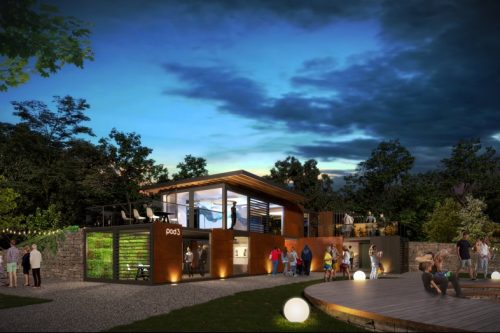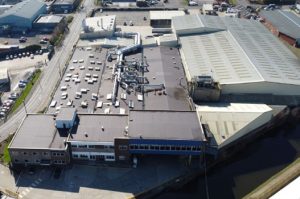Green light for Derwent Forest visitor centre and museum

Planning permission has been granted for a new visitor centre and museum at Derwent Forest, Cumbria.
Earlier this year a development consortium failed to win approval for the second phase of a multimillion-pound housing scheme and country park on a former Cumbrian weapons site in the forest, despite a recommendation to approve by planning officers.
The proposals included new homes and community facilities, a link to the coast-to-coast cycleway and the removal of miles of military fencing to open up the site for public use on the 1,050 acre site.
However, Allerdale Council has given the green light to the consortium’s latest plans which chart the history of the giant former NATO and Royal Navy arms dump at Broughton Moor.
Nigel Catterson, chair of Derwent Forest Development Consortium, welcomed approval for the scheme which he says will bring new visitors to an area rich in heritage and physical assets.
The visitor centre will serve the 140-mile coast-to-coast cycle route where it is hoped to enter the Derwent Forest site, supporting an improved 2.5km multi-user trail with facilities for cyclists, walkers and wheelchair users. It will also include the first new bridleway in Cumbria for many years.
Nigel said: “Our wider masterplan proposals have always been about opening up the site to beneficial uses like this, with enabling development such as much needed homes and employment space.
“We continue to review those plans in the light of constructive feedback from various stakeholders, including the council’s development panel.”
He added: “Following favourable feedback, we are working with our professional team as to how we revert with a revised application.”
This week’s approval includes the refurbishment of the original Seaton Road gatehouse to provide a supervised access point to the site, with a new-build two-story property providing space for a café and museum charting the history of the RNAD Broughton Moor from its early days as a colliery onwards to one of the country’s largest and most secret arms dumps.
There will also be car parking for 37 vehicles and a bay for a visiting coach. The scheme will include a new ‘trail-head’ facility for cyclists.
The role of the Derwent Forest project is recognised in a number of key strategies including the Energy Coast Masterplan, Sub-regional Spatial Strategy, Cumbria Tourism Destination Plan and Cumbria Economic Plan.
The coast-to-coast cycleway runs from Workington and Whitehaven to Tynemouth.
The arms depot was opened in 1939 on the site of Buckhill Colliery (1873 – 1932). In 1944 the site was expanded from 800 to 1,050 acres.
The depot was used by the MoD until 1963 before being leased to the West German government. From 1977 it was used by the US Navy for the storage of armaments for its North Atlantic Squadron.
From 1981 Broughton Moor was formally adopted as a NATO storage site.
The site was decommissioned at the end of the Cold War, finally closing on December 31, 1992. More than 130 magazine buildings remain on site.








